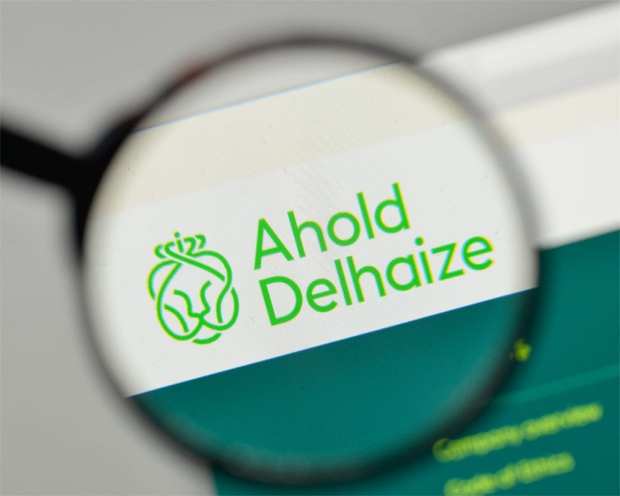Ahold Delhaize: Why Grocery Innovation Is About Capturing Share Of Stomach

Even a decade ago it was obvious that the rise of mobile and the expansion of eCommerce was going to have a transformative effect on retail. But very few people, when asked where the biggest investments, biggest swings, biggest changes and biggest players were going to pile up to fight it out, would have immediately thought of grocery retail as being the segment that emerged.
And yet it has undeniably evolved into exactly such a fraught battleground — with Amazon, Walmart, Target, Kroger, Costco and Ahold Delhaize among a host of players trying to crack the code on omnichannel grocery and reap the revenue rewards.
It is what brought Farhan Siddiqi to Ahold Delhaize as chief digital officer a year ago — drawing him away from McDonald’s where he served in the same position and is credited with creating and shaping the firm’s digital strategy — including the launch of mobile ordering and self-service kiosks at 20,000 locations. Grocery, he told Karen Webster in a recent conversation, is very different from the quick-service restaurant (QSR) segment, and a very exciting place to be at the moment.
It’s a competitive world out there, and though Amazon’s “eCommerce halo” tends to mean it captures a lot of headlines in the space and is often cited as the segment’s innovation driver, the reality is quite a bit different. While Amazon deserves all the credit in the world for pioneering the cashierless checkout in its Go stores, the digital reshaping of the world of grocery is a collaborative effort — and one Ahold-Delhaize has long had a part in.
“I think we’re co-shaping it,” Siddiqi said of the future of grocery retail, “and how it is evolving. I think when you look at Amazon, they’re learning the brick-and-mortar side and that it is a very tough, low-margin business. We get the physical pretty well and we know how to run it, probably better than most of our competitors in that space. And we are looking at the people and the strengths we have now — and really trying to build muscle on the digital side,” he told Webster.
And not digital muscle for its own sake, he noted, as that is the tech enthusiasm trap institutions trying to build out their capabilities often fall into. The point for Ahold Delhaize, he said, is to look through a consumer lens — and try to figure out how a multichannel grocery shopping experience can also be a more curated experience tailored to the individual shopper.
The Changing Sameness of the Grocery Segment
The vast majority of consumers, Siddiqi noted, still do the bulk of their grocery shopping in-store — despite myriad efforts to push digital grocery over the years, consumers maintain a preference for seeing their food, particularly fresh items, before they buy it. But, he said, though the temptation might be to sit back and comfortably conclude the grocery business is safe from the digital retail revolution, it is the wrong move. Ahold Delhaize is already starting to see what he called “the middle of the store” going digital — consumer packaged goods (CPG) items like paper towels and known commodity canned goods. That progress has been slower than expected, he noted, largely because digital grocery providers have had limited success in taking the 40,000 or so SKUs in the average grocery store and making them easily and quickly navigable on a 5-inch screen.
“But at no time can we sit comfortably because it is a matter of time when you think about that whole center aisle that someone will build a better version of the digital shopping experience that can deliver conveniently online and then deliver it same day. If it isn’t us, then it could be a shock to the system, so we have to stay on top of it,” Siddiqi said.
And then develop its offerings, he said, in line with what the firm’s data says consumers actually want and need — something Ahold Delhaize actually knows more than a little about between its successful loyalty programs, which has its more frequent customers swiping their card every time they shop, and its 20-plus years in the online grocery delivery business. Ahold Delhaize, he said, is sitting on a veritable “gold mine” of consumer data — and the challenge is to construct the sort of next-level experiences that optimize what the company knows about its consumers and what it can do for them with technology.
Which in short, he said, is to offer them a shopping journey that isn’t merely convenient in the sense that the store is physically close to their location, or value-driven in the sense they are being slipped a discount. Instead, he said, Ahold Delhaize wants to offer a multi-channel shopping suite that makes the customer feel both seen and in control.
Escaping the General
Convenient in the digital world, Siddiqi noted, isn’t only about proximity — it is about making it easy and rewarding for the consumer to find what they’re looking for, no matter what channel they are looking on, and then making it easy for them to lay their hands on it. Again, in the method they choose — same-day delivery, or stopping by the store.
Some customers, he said, are always going to want to go into the store to pick the fresh goods — to personally squeeze the tomatoes and inspect the chicken breasts. Some, though, after some experimentation with grocery pickup and delivery, will be converted when they see that what is selected for them is sometimes better than what they were choosing for themselves.
It is also, he added, about realizing that the transition to digital means an opportunity to do more with a rewards program than simply slip consumers a generic discount. Consumers get lots of discounts, he noted, and discounting in food sales is a long-established practice. What consumers want, he said, particularly when it comes to rewards, is customization. It is why Ahold Delhaize is experimenting with rewards programs that allow consumers to both pick the grocery categories in which they want to accrue rewards points, and where they want to leverage them — for food, for gas or for other offers.
“The customer gets value, but it’s also optimization around a personal experience so the discounts are tied to you and involved actual choice,” he said of customization.
It also means thinking out of the box, and about what else customers care about when they are shopping apart from the goods they want and the price they’ll pay. Increasingly, he said, their customers want to know about food waste, and how to right-size their consumption to avoid it. So, Siddiqi noted, the company has learned to use technology to answer that need — and help make its customers part of the solution.
“We’re experimenting with dynamic pricing to make sure that products are sold before the expiration date by lowering their price as it approaches. So you don’t have to just throw it away. It is a small thing, but it helps our community and actually makes an impact on the planet. So that’s a big role we get to play,” said Siddiqi.
And, he noted, it will likely be one of many new roles the firm will be playing as the grocery world continues to evolve. But it’s action he says he’s excited for, because Ahold Delhaize already knows a lot about groceries and the consumers that buy them — and is building digital muscle in combination with that knowledge to keep battling in the segment. No matter how crowded it gets, or how bright the halos of its competitors.
